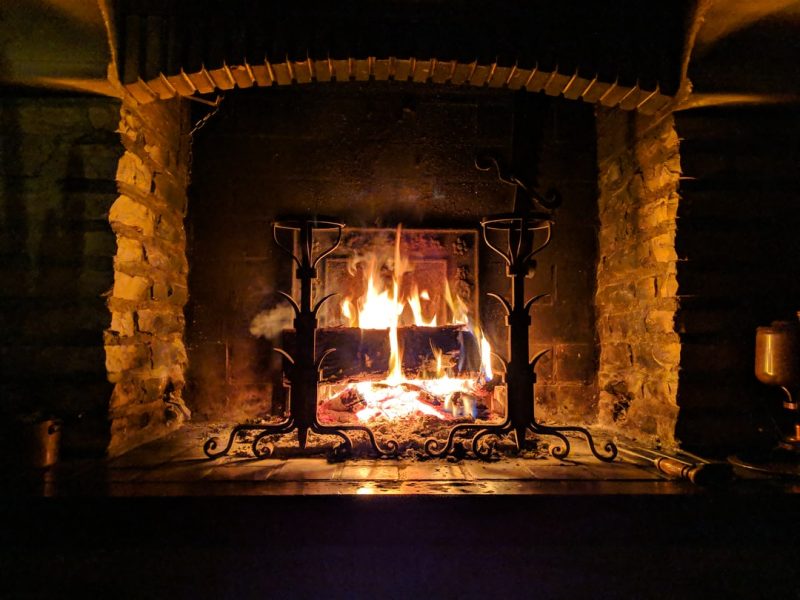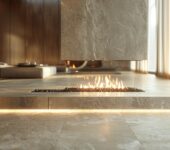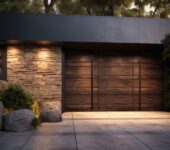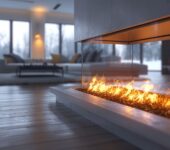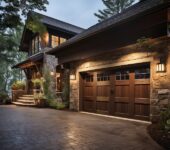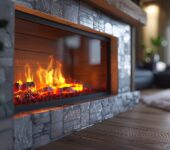Across the country, there are over 17.5 million fireplaces situated in people’s homes. But did you know that fireplaces weren’t always just a beautiful, cozy addition to the living room? They used to be a crucial necessity for homes in early America. In this article, we’ll explain the brief history and evolution of fireplaces and the fireplace ideas that came with them. Keep reading to learn more.
The History of Fireplaces
Fireplaces have come a long way since their beginnings. Let’s take a look at the evolution of fireplaces over the centuries.
Fireplaces in the 1600s to Early 1700s
When fireplaces first began making an appearance in homes, they were much more practical than decorative. The fireplace was the hub of the American home. It provided heat to the rest of the building. It also contained several different fires that were used for cooking and baking, so most of the family gatherings were based around the fireplace. During the 1600s to the 1700s, the normal fireplace looked a lot different than it does today. You were able to walk into the fireplace through a wide, deep recess. It typically didn’t have a mantel, or only something representing a very small mantel. They were usually much wider than tall, especially in Dutch homes. In English homes, on the other hand, they were much smaller and more efficient. In colonial homes in the colder Mid-Atlantic and New England, fireplaces were connected to central chimneys with multiple flues (ducts for smoke). They were set up like this so that multiple fires could be lit in several rooms on different floors. The stone or brick of the fireplace retained heat, keeping the house warm. However, in the warm South, the fireplaces were located on the far ends o the house. This lowered the amount of heat buildup so that the house could stay cooler during the summer. Before the 1800s, mantels for fireplaces were scarce. Most American fireplaces were flush with the wall. In English colonial homes, the normal fireplace setup included placed in the middle, surrounded by paneling and vertical planks. In Dutch homes, the flue of the fireplaces was projected into the room, covered by a hood. If they wanted to decorate it, they would add some Deleware tiles or decorative curtains. Halfway through the 18th century, the fireplace was the house’s centerpiece.
Fireplaces in the 1800s
By the time the 19th century came around, fireplaces were still large enough to house multiple people inside them. However, Sir Benjamin Thompson, or Count Rumford, started designing the “firebox” in 1795. This became the blueprint of what all modern open fireplaces are today. The Rumford fireplace was designed to be taller than it was wide and much shallower than the typical style of that time. It featured sharply angled walls along each side of it, which helped push more heat into the room. Another feature of the Rumford fireplace was the more narrow throat. This allowed smoke and air to exit much faster, which acted as a check against backdrafts. After the Revolutionary War, decorative elements on full-relief fireplaces with mantels became much more prevalent. Once the mid-1800s came around, the country had become much more industrialized. Households began burning coal more than wood. This led to new designs, like smaller grates and baskets made to hold the coal. As the Victorian Age continued, the fireplaces became more ornate, and even included complete cast-iron combination fireplaces.
Fireplaces in the 1900s
Once the 20th century came around, styles began to retreat to simplicity. They became much simpler, going back to designs popularized in the late 1700s. They were typically furnished with simple brick and stone. Teddy Roosevelt was the leader of the “back-to-nature” movement, which significantly affected how homes were built. Many fireplaces were designed completely out of river rock or stone. This rustic style has also helped accelerate the Arts & Crafts movement. The materials from brick and dressed stone were soon used in “modern” fireplaces.
Modern Fireplace Ideas
Throughout American history, fireplaces ranged from simple and rustic to highly ornate. Taking a look back at its evolution can help you come up with a fireplace idea for your own home. Although the shape of the modern fireplace hasn’t changed much over the past few centuries, there is a wide range of diverse and creative design options for today’s fireplaces. Today, you can choose from several different types of fireplaces that fit your home and budget the best. An electric fireplace is an electric heater that mimics the coziness of a fireplace that burns coal or wood. Electric fireplaces are great because they can simply be plugged into your wall. No harmful fumes are leaked into your home, and it is easy to maintain and clean. A gas fireplace is another great option that can mimic real wood in appearance. It produces some smoke that should be vented (because of the gas). You can easily control the amount of gas being used to ignite the fire to create a bigger or smaller fire. Another popular alternative is a gas fireplace insert. Gas inserts are not actual fireplaces, but are rather inserts that are installed into existing fireplaces. They are designed to replace wood fireplaces because they are cleaner. But if you’re looking for the most classic of all fireplaces, you might want to opt for a wood-burning fireplace. These provide the most beautiful ambiance, smell, and warmth that people love about natural wood fires. Even though other alternatives have grown in popularity, wood fireplaces will always be a staple.
Create a Warmer Home Today
That’s everything you need to know about the history and evolution of fireplaces. Hopefully, it helped you come up with some fireplace ideas for your own home. If you’re ready to get professionally installed fireplaces to create warmth and ambiance in your home, reach out to Dreifuss Fireplaces today!
Latest Articles

What Kind Of Paint To Use On Metal Garage Doors
Table of Contents1 Why Paint Your Metal Garage Doors?2 Types of Paint for Metal Garage Doors3 Factors to Consider When Choosing Paint for Metal Garage
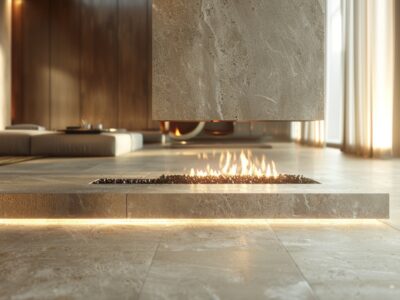
Why Has The Mist On My Fireplace Stopped Working?
Table of Contents1 What Is a Fireplace Mist System?2 How Does a Fireplace Mist System Work?3 What Are the Benefits of a Fireplace Mist System?4
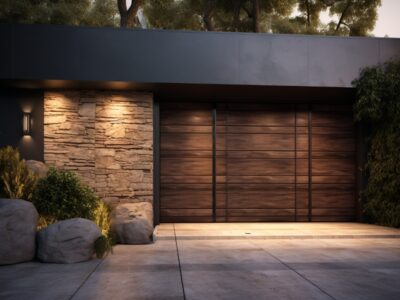
How Much Do Roll Up Garage Doors Cost?
Table of Contents1 What Are Roll Up Garage Doors?2 What Are the Different Types of Roll Up Garage Doors?3 How Much Do Roll Up Garage



